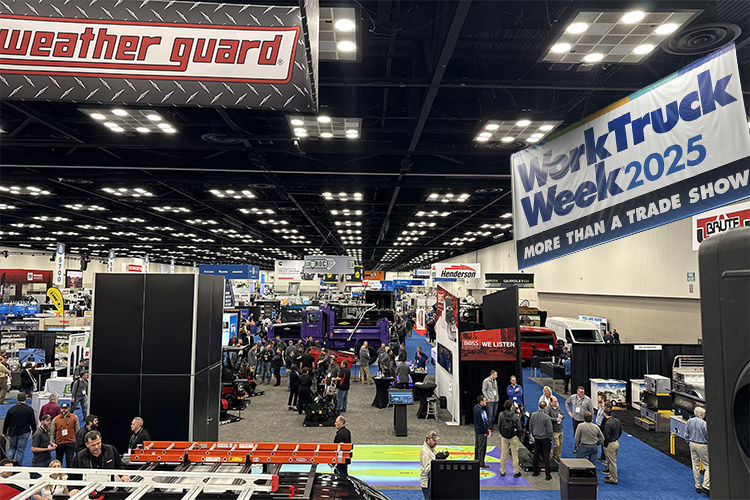Tools & Technologies for Increasing Fuel Economy in Commercial Vehicles


Tools & Technologies for Increasing Fuel Economy in Commercial Vehicles
Commercial vehicles play a pivotal role in the global economy. They facilitate trade, contribute to job creation, and provide essential services. However, these benefits come with environmental costs, primarily fuel consumption and carbon emissions. Therefore, fuel efficiency is not only a key consideration for operational costs—it’s closely linked to the broader goal of sustainable transportation. Alongside this, safety and insurance aspects also tie into a business's overarching goals.
Technologies for Enhancing Fuel Economy in Commercial Vehicles
As business owners and fleet managers grapple with the pressure to reduce emissions, they are turning to technology to optimize fuel usage. Fuel-efficient vehicles have the dual advantage of saving costs for businesses in fuel expenses and helping meet increasingly stringent global emissions regulations, thus benefiting the broader transportation industry with greener alternatives.
Diesel engine technologies
Modern diesel engines are far removed from their predecessors. Recent advances in engine technology include variable geometry turbochargers, which adjust to optimize efficiency, and exhaust gas recirculation systems, which reduce nitrogen oxide emissions. Additionally, advanced transmissions ensure power is applied in the most efficient way possible, delivering both fuel savings and performance improvement.
Aerodynamic innovations
Aerodynamic designs and features can significantly enhance fuel economy in commercial vehicles. These include trailer skirts, which reduce wind resistance, and low-rolling-resistance tires, which decrease the amount of energy needed for the vehicle to move. Moreover, lighter materials are now used in construction to reduce vehicle weight and improve fuel economy.
Advanced navigation and telematics systems
Advanced navigation systems provide the most efficient routes, saving both time and fuel. Telematics technology allows for real-time monitoring of fuel consumption and maintenance needs for each vehicle in a fleet, ensuring optimal operation and fuel efficiency.
Techniques for Enhancing Fuel Economy in Commercial Vehicles
In addition to the latest technologies and tools, simple operator techniques can substantially improve fuel economy in commercial vehicles. These methods often require minimal investment, can be implemented immediately, and contribute to significant cost savings over time.
Drive at optimal speed
Each vehicle will have its own optimal speed for fuel efficiency. Note that telematics are a great aid in determining each vehicle's optimum speed. Once the optimal speed for each vehicle is identified, drivers must be aware of it and encouraged to drive at that speed whenever possible. This can be done through training and education, as well as through the use of telematics systems that provide real-time feedback on driving behavior.
Use cruise control
The use of cruise control on highways and open roads can also improve fuel economy. By maintaining a constant (and optimal) speed over longer distances, cruise control can reduce unnecessary speed variations, leading to more efficient fuel usage and lower emissions.
Keep tires properly inflated
Proper tire inflation is integral to fuel efficiency. Under-inflated tires create more resistance, making the vehicle work harder and burn more fuel. Therefore, regular tire pressure checks and adjustments can enhance fuel performance.
Smooth acceleration and braking
Accelerating and braking smoothly can have a substantial effect on fuel consumption. Sudden starts and stops can increase fuel usage by as much as 20%. Conversely, maintaining a smooth and steady driving style can result in significant fuel savings.
Minimize idling
Excessive idling can also contribute to fuel waste. Whenever feasible, drivers should turn off the engine during prolonged periods of inactivity to save fuel.
Regular vehicle maintenance
Routinely servicing a vehicle and ensuring it's in good working condition can also enhance fuel efficiency. Clean air filters, efficient oil filters, and well-maintained engines operate more efficiently and therefore consume less fuel.
Alternative powertrains
Innovations in alternative powertrains, such as fully electric and natural gas technology, provide promising options for reducing fuel consumption and curbing emissions in commercial vehicles. While there are still hurdles to overcome, such as infrastructure development and initial cost—progress is steadily being made.
Connecting Safety Enhancements and Fuel Economy
Improved vehicle technologies can lead to both increased safety and improved fuel economy. For instance, advanced driver-assistance systems (ADAS) not only protect drivers and cargo, but also reduce fuel consumption by making driving smoother and more efficient. Features of an ADAS may include: adaptive cruise control, driver alerts for possible obstacles, assist in avoiding collisions, assist in lane departure and lane centering, and incorporated satellite navigation. It's not hard to determine the ways that ADAS can improve safety and fuel economy.
For example, if a driver is using adaptive cruise control to maintain a safe distance from the vehicle ahead of them, they won't need to brake as often and, therefore, won't burn as much fuel. Similarly, if an ADAS helps drivers avoid collisions by automatically applying the brakes when it senses that another car is about to rear-end them, then they won't have to use their own brakes as often and will again save on fuel costs.
Connecting Insurance and Fuel Economy
Insurance companies are gradually recognizing the importance of fuel economy, with premiums gradually being linked to fuel efficiency. Telematics technology, which allows accurate monitoring of driver behavior, aids in providing personalized insurance premiums, thus potentially incentivizing eco-friendly driving. Furthermore, some insurers are implementing discount programs for fleets equipped with advanced fuel-efficient technologies.
Conclusion
The drive for greater fuel economy in commercial vehicles represents a fusion of cost-saving objectives, environmental considerations, and safety norms. The dynamic landscape of the commercial transportation sector accentuates the importance of the ongoing development of fuel-efficiency technologies.
 Protecting Your Business with the Right Commercial Auto Insurance
Protecting Your Business with the Right Commercial Auto Insurance Summer Fleet Maintenance: How to Protect Commercial Vehicles from Extreme Heat
Summer Fleet Maintenance: How to Protect Commercial Vehicles from Extreme Heat Business Owners Feeling Tariff Pressure: Challenges and Strategies
Business Owners Feeling Tariff Pressure: Challenges and Strategies Innovations for National Distracted Driving Awareness Month
Innovations for National Distracted Driving Awareness Month Work Truck Week 2025: Examining the Trajectory of Commercial Vehicle Innovation
Work Truck Week 2025: Examining the Trajectory of Commercial Vehicle Innovation






